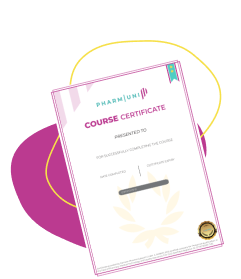QMS Audits (Quality Management System Audits)
Definition
QMS audits, or Quality Management System audits, are systematic, independent, and documented evaluations conducted to determine whether quality activities and related results comply with planned arrangements. These audits assess the effectiveness of a company’s quality management system (QMS) in meeting regulatory requirements, internal policies, and industry standards, particularly in the pharmaceutical and life sciences sectors.
Detailed Explanation
QMS audits play a critical role in ensuring ongoing compliance, continuous improvement, and inspection readiness in regulated industries such as pharmaceuticals, biotechnology, and medical devices. These audits can be internal (conducted by or on behalf of the organization itself) or external (conducted by regulatory bodies, certification agencies, or customers).
Types of QMS Audits
- Internal QMS Audits: Also known as first-party audits, these are conducted by internal teams to verify compliance with internal procedures and regulatory expectations. They help identify gaps, inefficiencies, and areas for improvement before external audits occur.
- External QMS Audits: These include second-party audits (e.g., customer audits) and third-party audits (e.g., regulatory inspections or ISO certification audits) to ensure supplier or organizational compliance with contractual and regulatory requirements.
Purpose and Importance
The primary goals of QMS audits include:
- Ensuring compliance with Good Manufacturing Practice (GMP) guidelines and other relevant regulations (e.g., FDA 21 CFR Part 210/211, EU GMP guidelines).
- Assessing the effectiveness of the QMS in controlling processes and ensuring product quality and patient safety.
- Identifying nonconformities, risks, and improvement opportunities.
- Preparing for regulatory inspections and maintaining a state of inspection readiness.
Audit Process
The typical QMS audit process includes the following steps:
- Planning: Define audit scope, objectives, criteria, and schedule. Select qualified auditors.
- Execution: Conduct interviews, review documentation, and observe processes to collect evidence.
- Reporting: Document findings, including nonconformities, observations, and opportunities for improvement.
- Follow-up: Implement corrective and preventive actions (CAPAs) and verify their effectiveness through re-audits or tracking.
Examples in the Pharmaceutical Industry
In the pharmaceutical sector, a QMS internal audit might assess the adequacy of procedures for:
- Batch record review and release processes
- Deviation and CAPA management
- Training and qualification of personnel
- Change control systems
- Supplier qualification and management
For example, a GMP-compliant facility might conduct quarterly internal audits to evaluate adherence to SOPs and identify any gaps that could trigger FDA 483 observations during inspections.
Regulatory Expectations
Regulatory authorities such as the U.S. Food and Drug Administration (FDA), European Medicines Agency (EMA), and International Council for Harmonisation (ICH) expect companies to maintain robust quality systems. QMS audits are a key component of demonstrating that the organization operates in a state of control.
According to FDA’s Guidance for Industry: Quality Systems Approach to Pharmaceutical CGMP Regulations, internal audits are essential for self-assessment and continual improvement. Similarly, EU GMP Chapter 9 emphasizes the need for regular self-inspections and audit programs.



